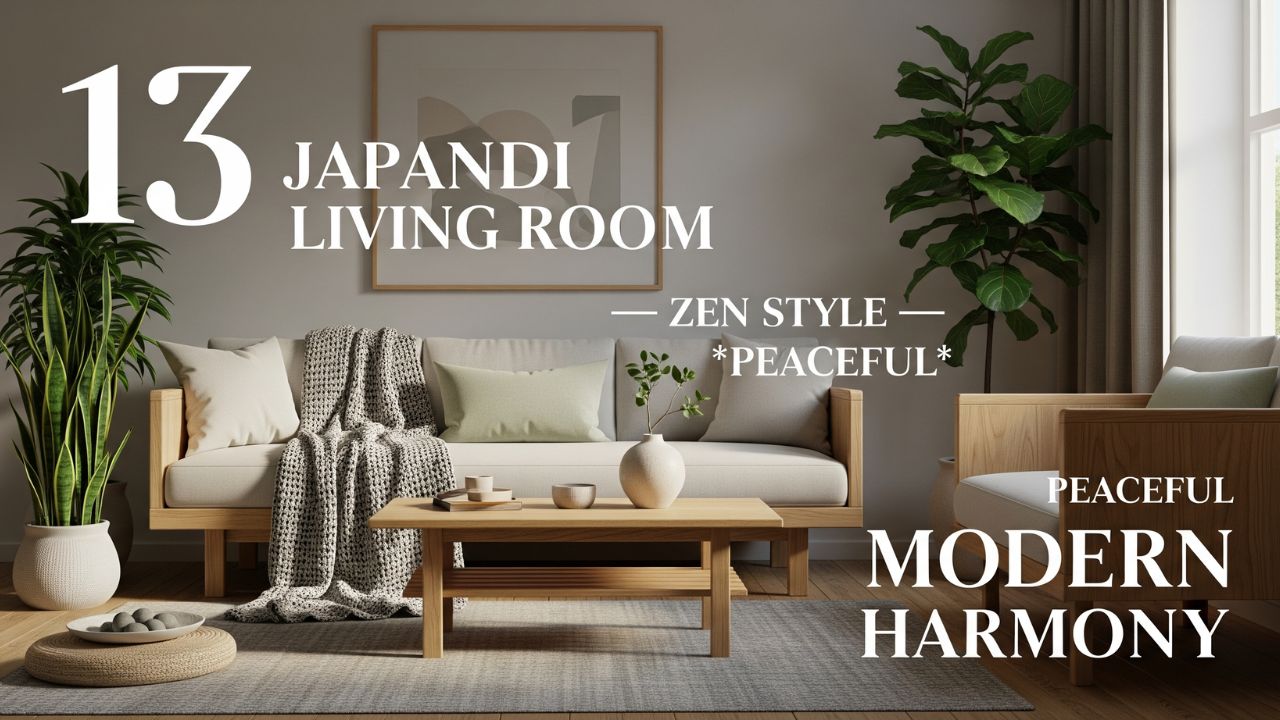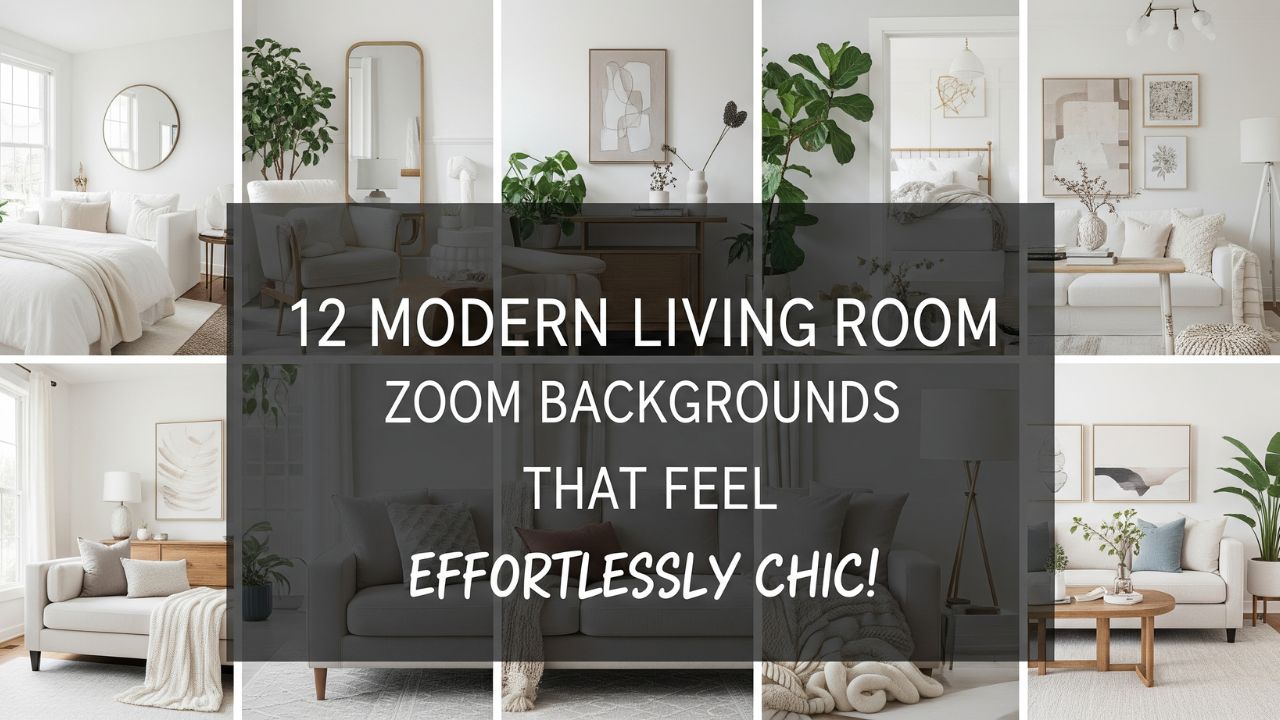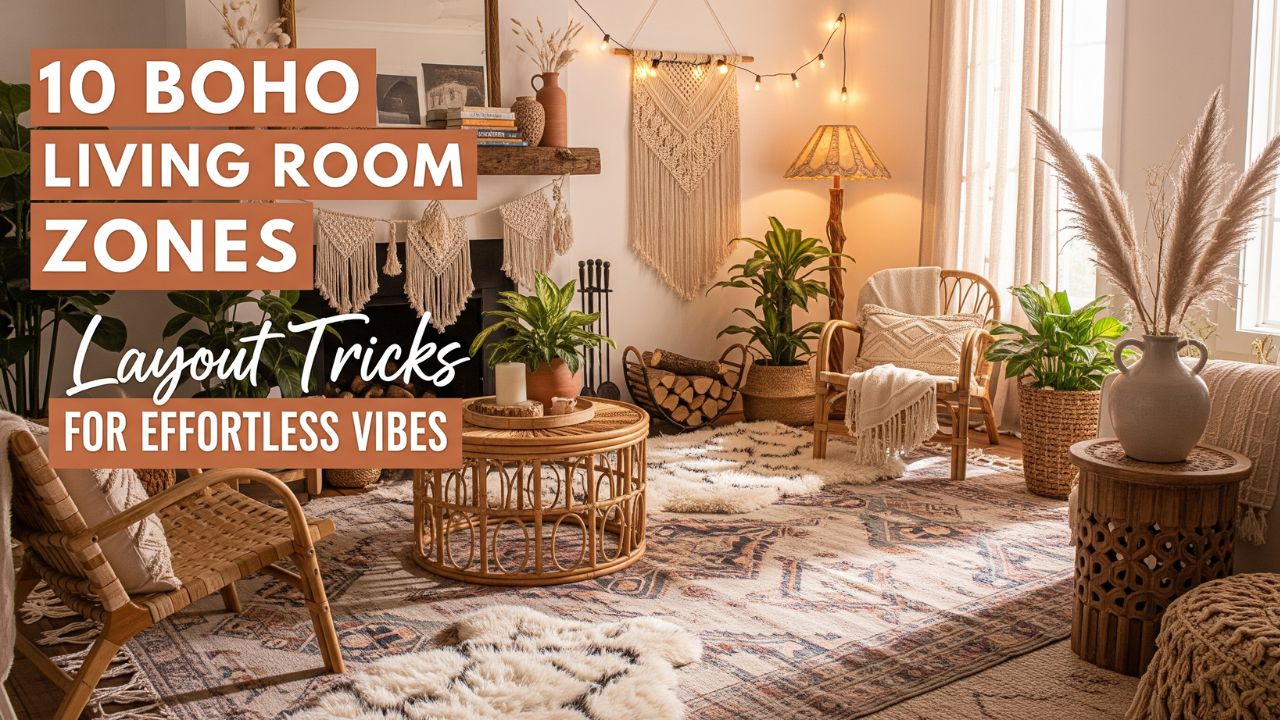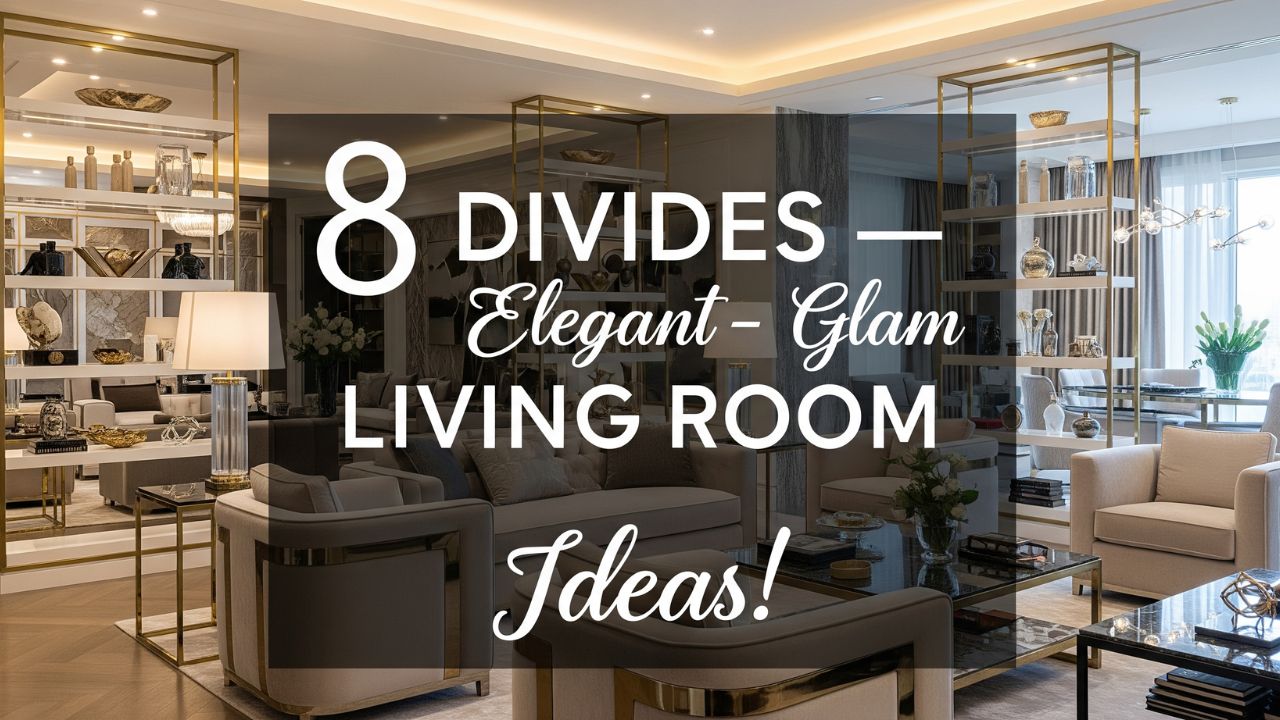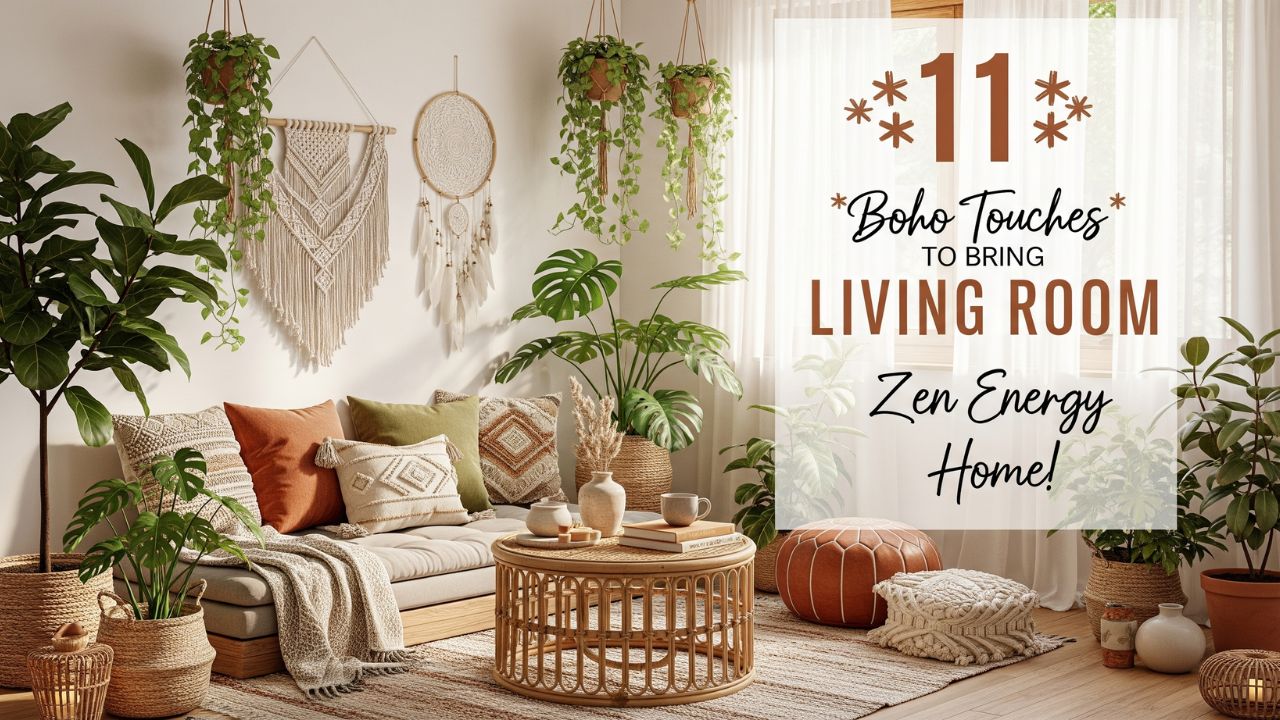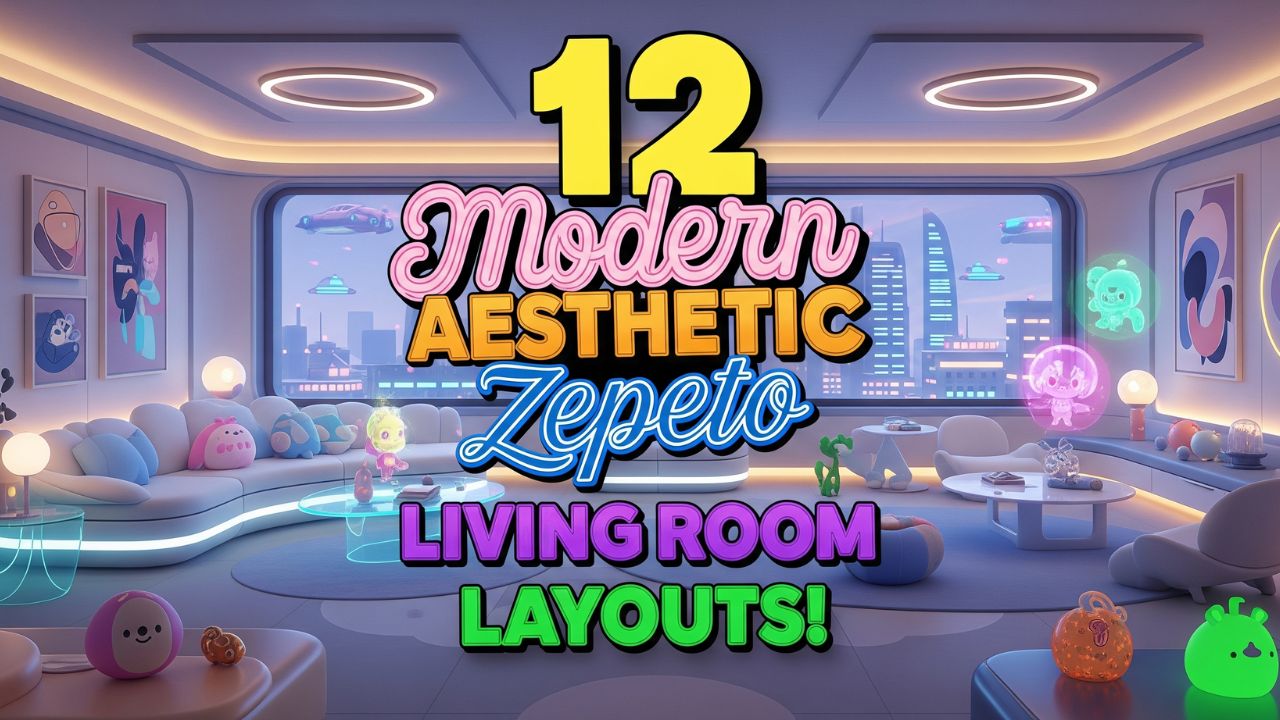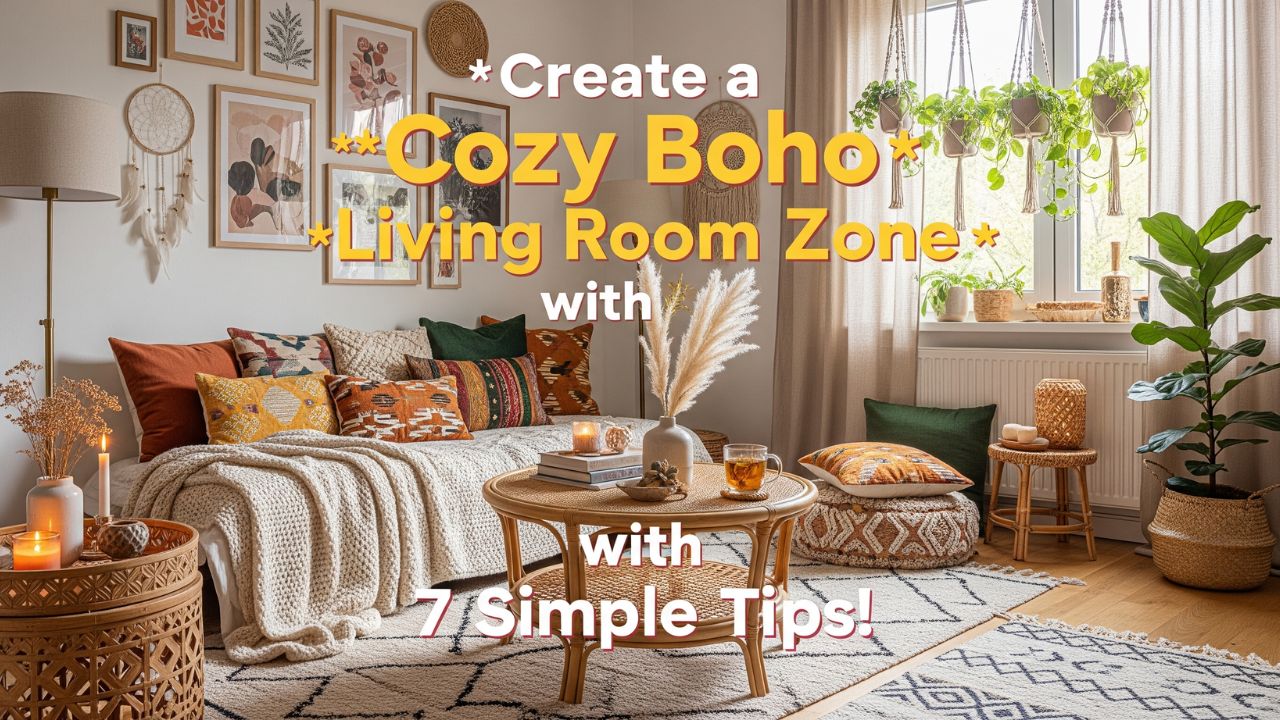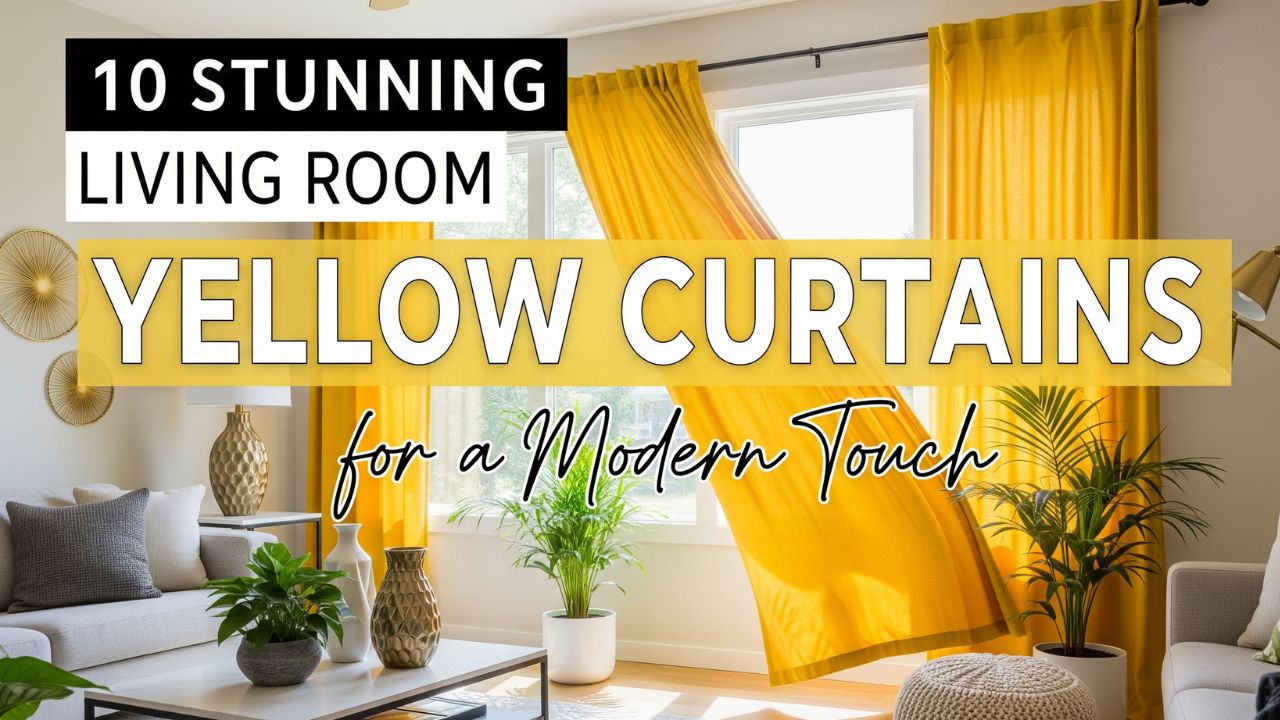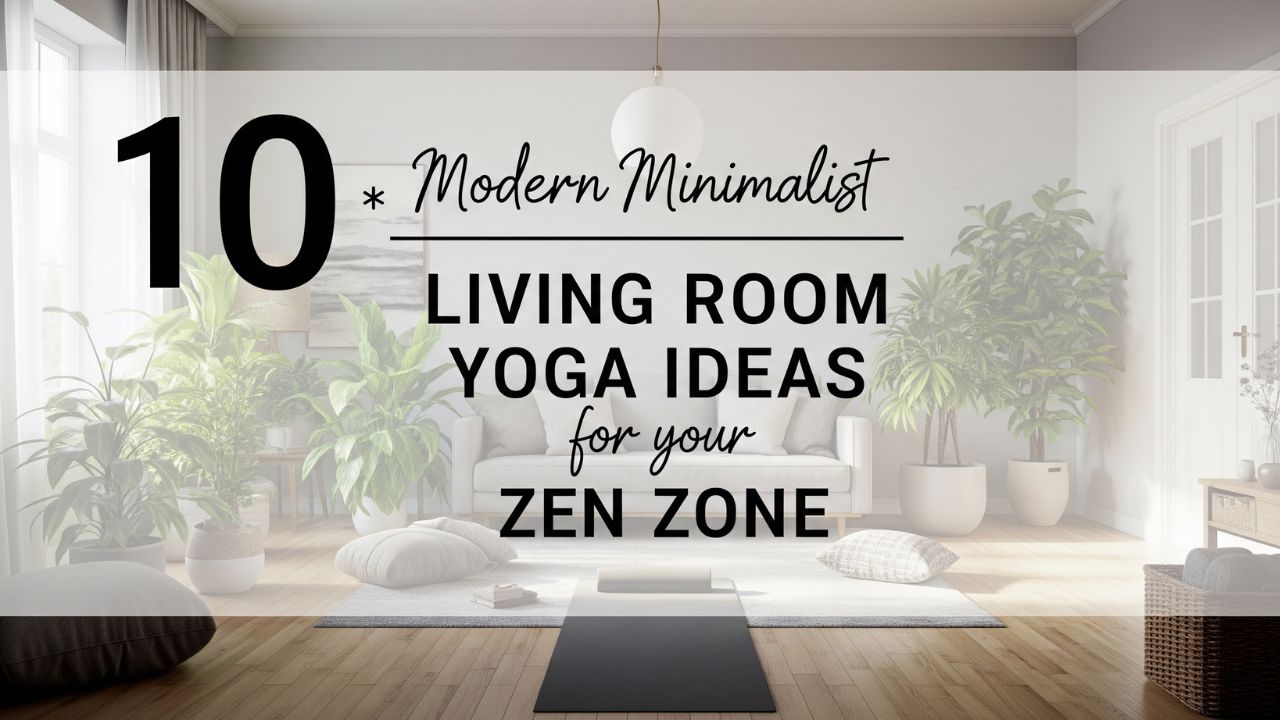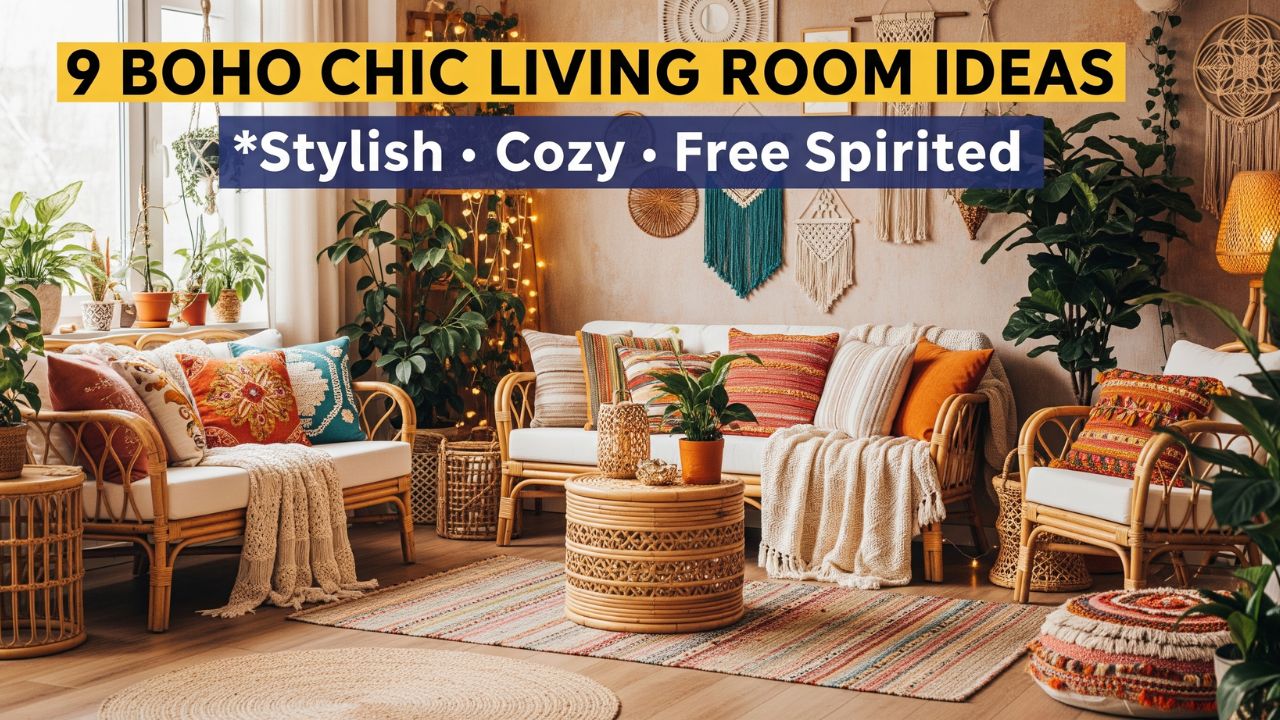When it comes to creating the perfect minimalist living room, one of the most impactful decisions you’ll make is choosing the right paint color. A well-chosen hue can transform a space, creating a serene, uncluttered environment that feels inviting and relaxing.
Minimalism isn’t about stark whites and neutrals alone—it’s about creating a balance that feels intentional and thoughtfully curated. But what colors really bring out that chic, minimalist vibe without feeling cold or monotonous?
Let’s dive into the world of minimalist living room paint colors and explore some stunning options that will elevate your home.
Do you know that the color of your walls can affect your mood and productivity? Studies have shown that certain shades can promote calm, creativity, and even happiness. For a minimalist style, the trick is to use subtle tones that enhance the spacious, light, and airy feel you’re aiming for.
Now, let’s explore 15 paint color ideas that will give your living room a chic minimalist makeover.
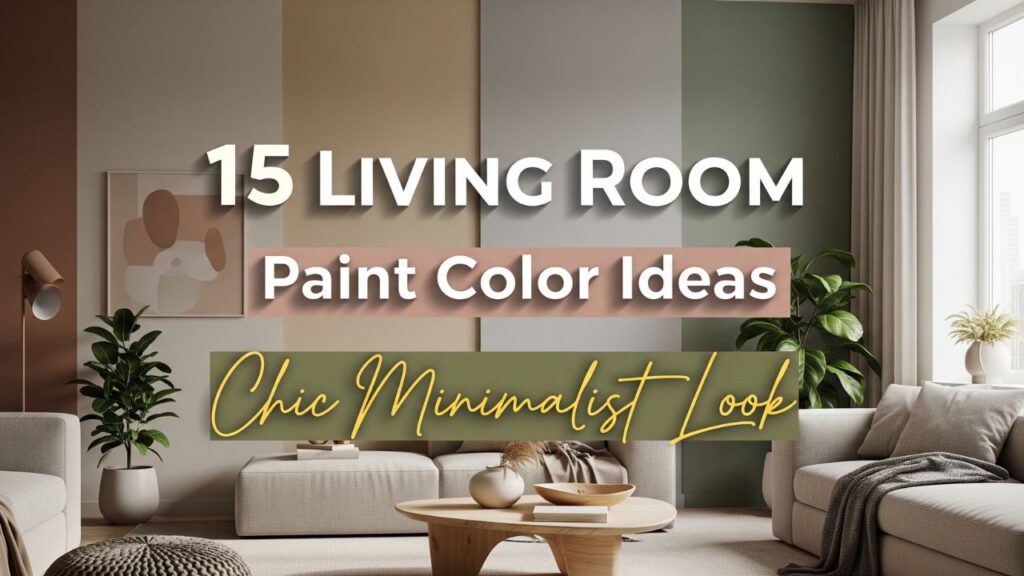
Table of Contents
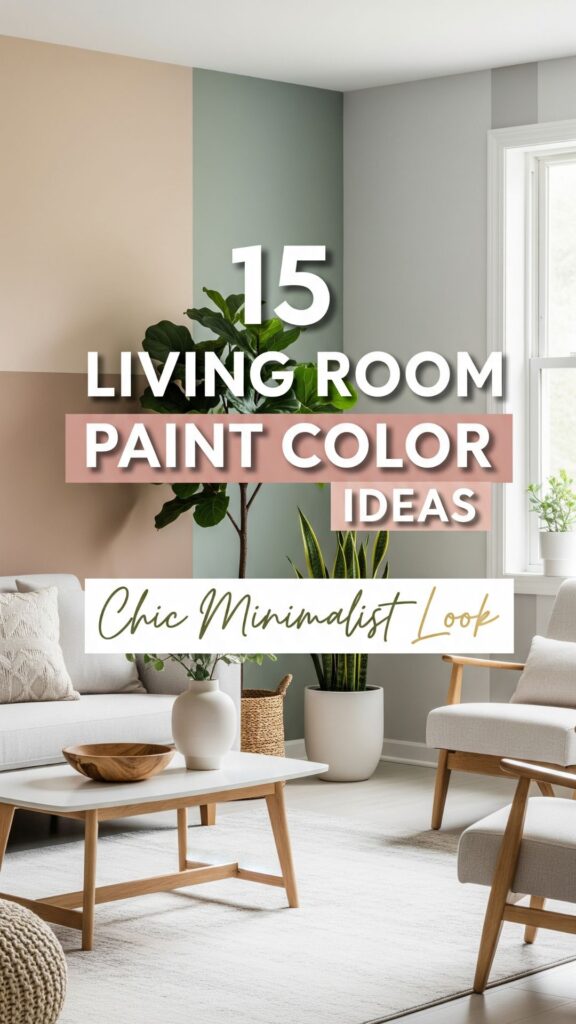
15 Living Room Paint Color Ideas To Try
1. Soft Gray: A Timeless Choice
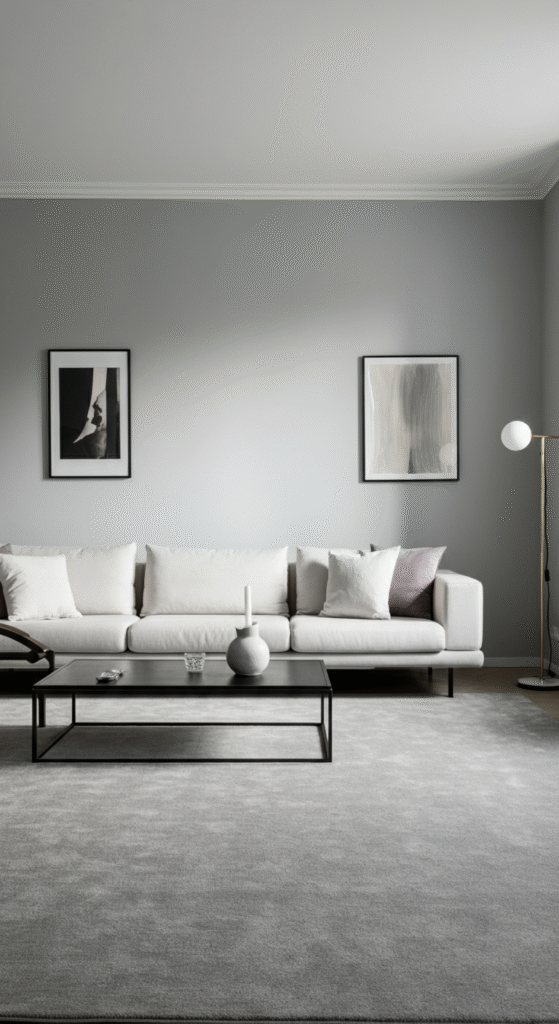
Soft gray is a staple when it comes to minimalist design. It’s neutral, elegant, and provides a calm backdrop for other elements in the room, whether it’s furniture or artwork. A light gray can make a space feel open and airy, while a slightly darker shade adds sophistication and depth.
Fun Fact: Did you know that gray is often associated with balance and neutrality? It’s a great color for creating a calm and centered atmosphere in your living room.
2. Crisp White: The Ultimate Minimalist Shade
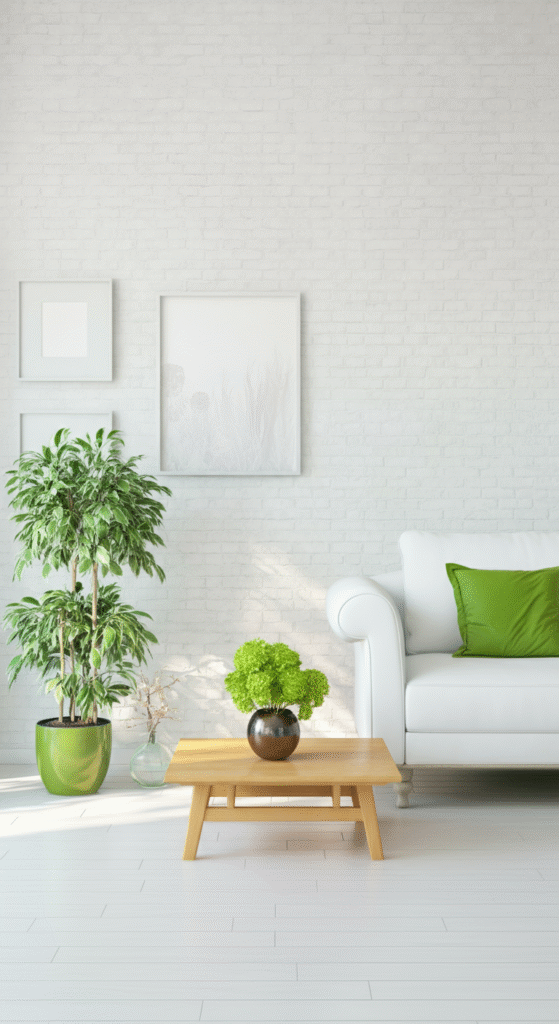
When in doubt, you can never go wrong with crisp white. It’s the epitome of minimalism, providing a clean, fresh look. White walls can help reflect natural light, making the space feel larger and more open. This is especially ideal for smaller rooms where you want to maximize light and space.
Myth Busted: Many believe white walls make a room feel cold. In reality, with the right furnishings and accessories, white can create a warm, inviting environment, especially when paired with natural textures like wood or linen.
3. Tranquil Beige: A Warm, Inviting Tone
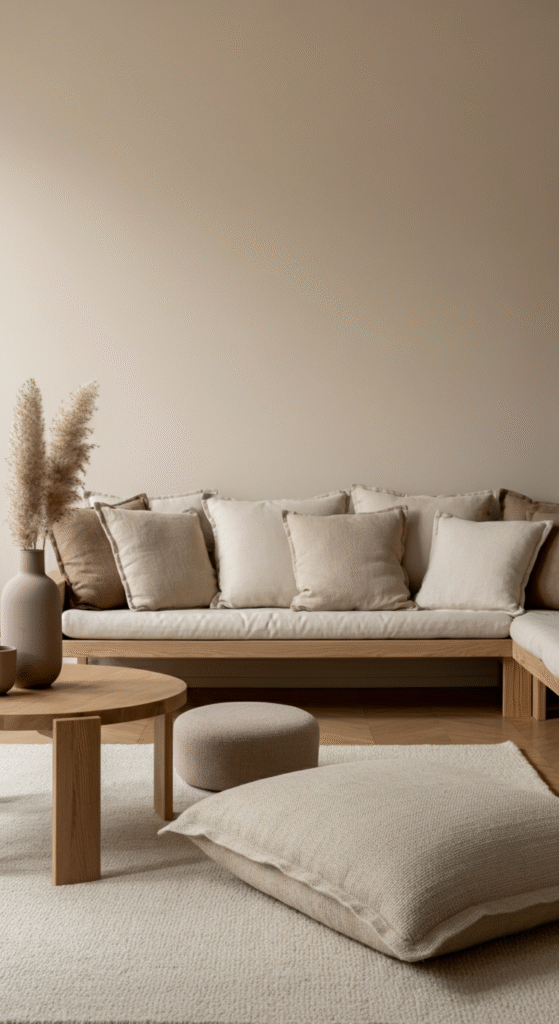
Beige is an excellent alternative to gray or white if you want a warmer, softer look. It’s a versatile color that can complement nearly any furniture or decor style. Beige can bring warmth and coziness to a minimalist living room, creating an inviting and comfortable space.
Interesting Fact: Beige is known to promote feelings of relaxation and calmness. It’s an excellent choice for those looking to create a peaceful living environment.
4. Dusty Blue: A Subtle Touch of Color
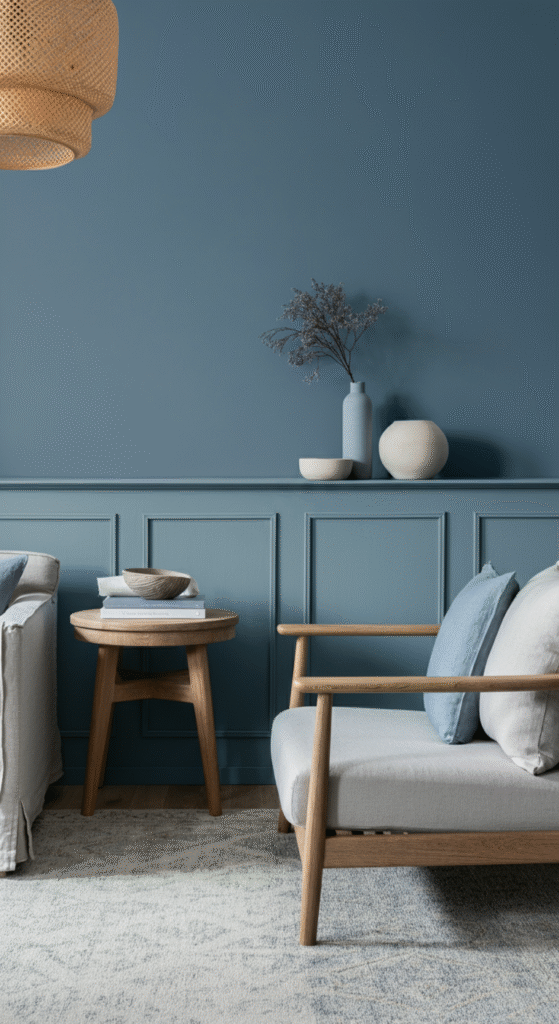
If you’re looking for a soft pop of color without overwhelming the room, dusty blue is a fantastic option. It pairs well with natural wood tones and soft neutrals, adding a touch of elegance without being too bold. This muted blue gives your living room a serene vibe, ideal for a minimalist space.
5. Muted Olive: Natural and Earthy
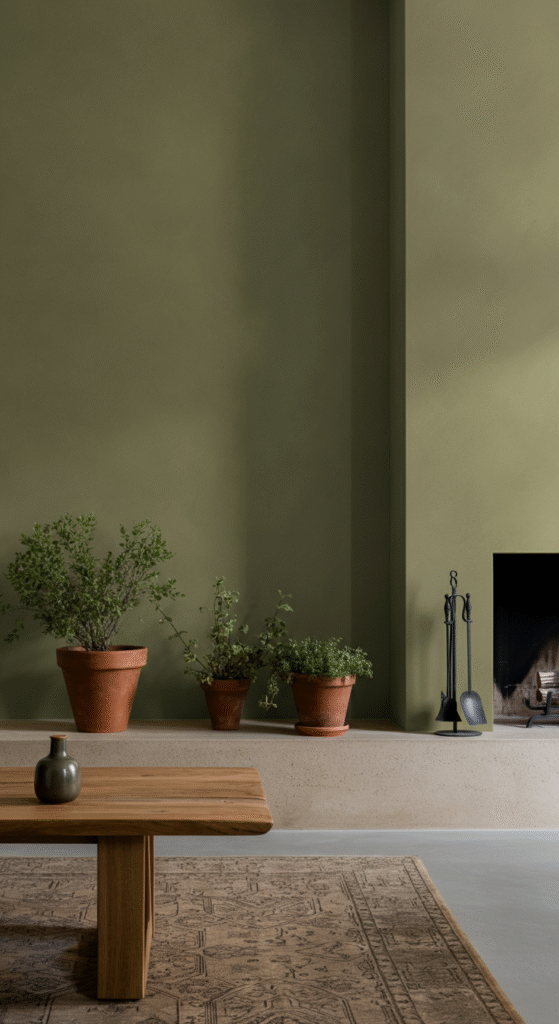
For those who want to introduce a bit of nature into their living room, muted olive is an understated yet beautiful choice. It brings in the calming effects of green without being too bold. Olive tones work especially well when combined with natural textures like woven rugs, stone, or plants.
Fun Fact: Green is considered the most restful color for the eyes, making it a perfect choice for spaces where you want to unwind and relax.
6. Light Taupe: Neutral with a Touch of Warmth
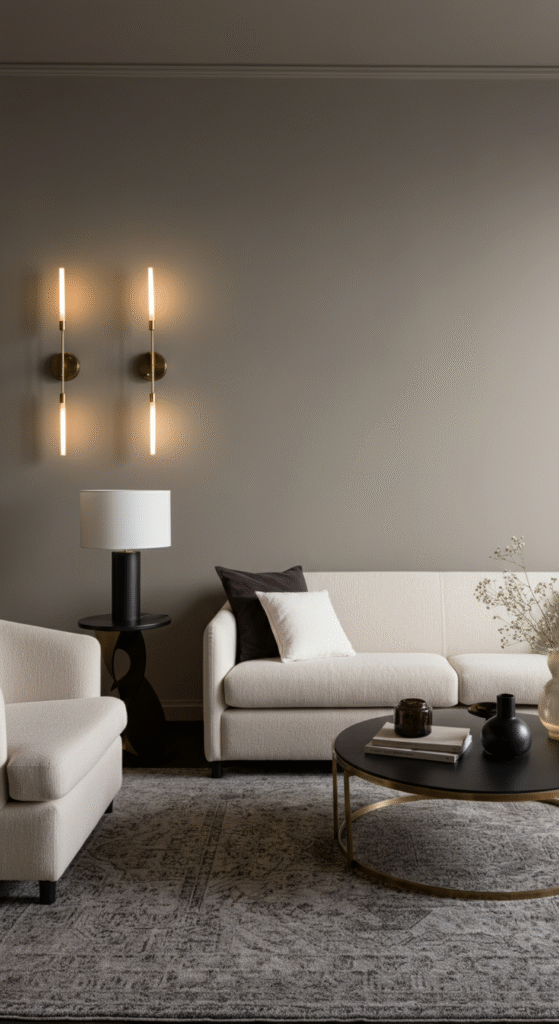
Light taupe is another excellent color that offers warmth while maintaining the minimalist aesthetic. This shade has a cozy, grounded feeling, which works well in living rooms that need a subtle balance between lightness and warmth. It pairs beautifully with both modern and traditional furniture.
7. Soft Charcoal: Adding Depth and Contrast
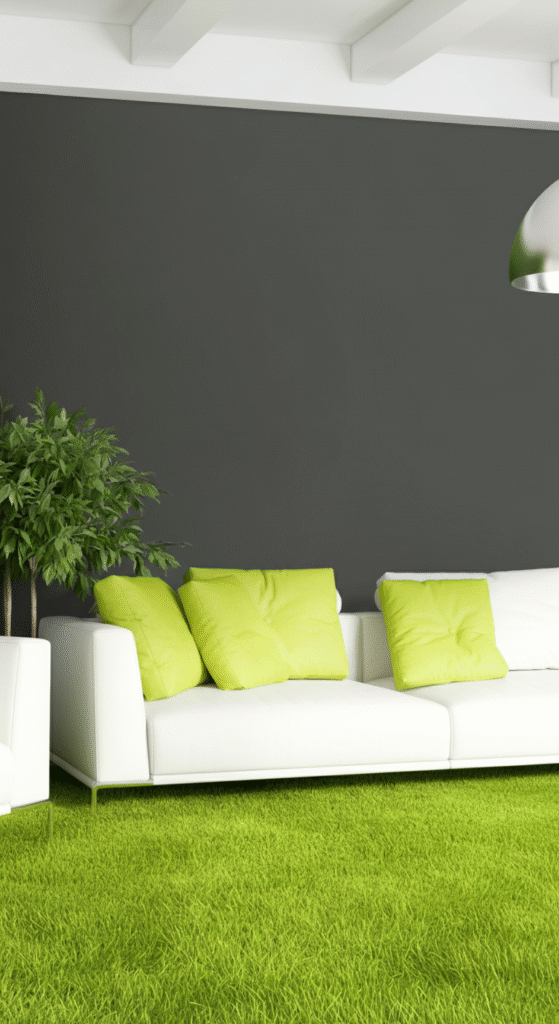
While black may seem too heavy for a minimalist space, a soft charcoal shade can provide the perfect amount of contrast. This deep gray can be used as an accent wall or for the entire room. It gives a sophisticated and slightly dramatic touch while still maintaining the simplicity of minimalist design.
Do you know? Charcoal gray is often used in interior design because of its ability to ground a space and add elegance without overwhelming the senses.
8. Warm Ivory: Cozy and Bright
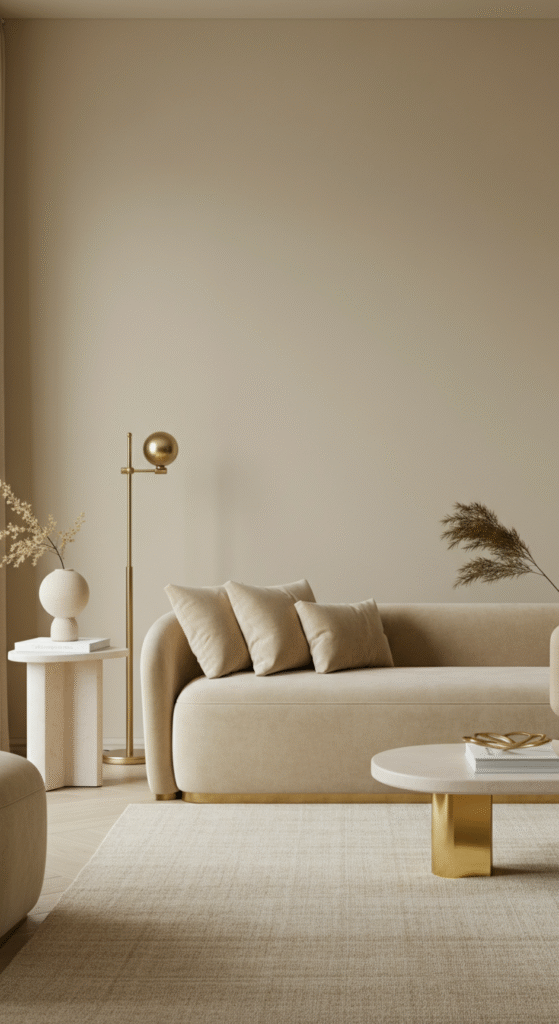
Ivory is a slightly warmer alternative to white, giving your living room a soft, creamy look that feels both inviting and fresh. It’s perfect for those who want a brighter space but prefer something gentler than stark white. Warm ivory creates a cozy, refined atmosphere, ideal for minimalist design.
9. Powder Pink: Subtle, Soft Elegance
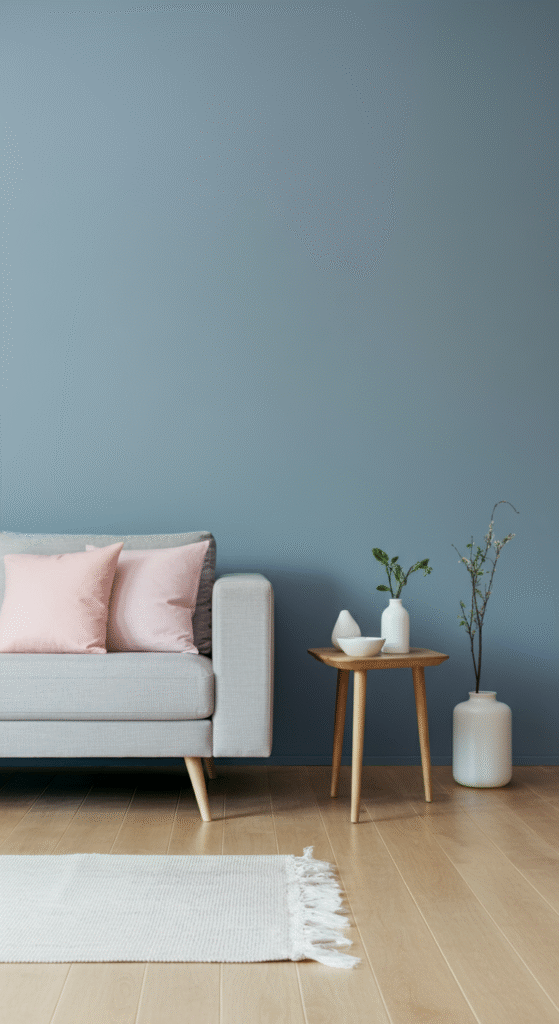
Powder pink may seem unconventional for minimalist design, but when used subtly, it adds a touch of warmth and sophistication. This soft, pastel hue creates a calming environment and pairs beautifully with neutral tones. It’s perfect for those who want to add just a hint of color to their minimalist living room without making it too bold.
10. Soft Mint: Fresh and Inviting
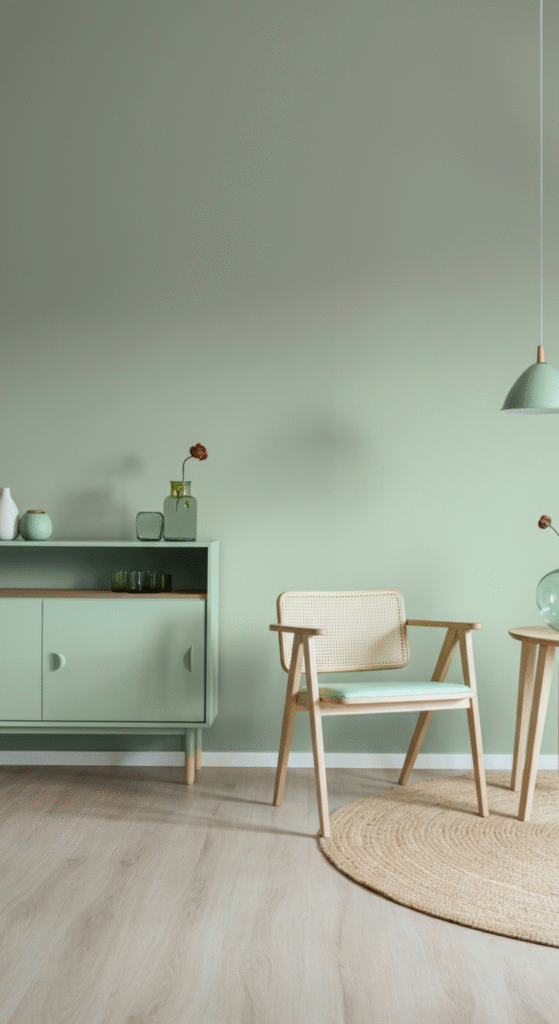
Mint green is a fresh, uplifting color that still maintains a minimalist feel. It’s soothing, clean, and pairs beautifully with other cool tones like white, gray, or blue. Mint can help your living room feel light and airy, creating an inviting and refreshing environment.
11. Slate Blue: Calm and Contemplative
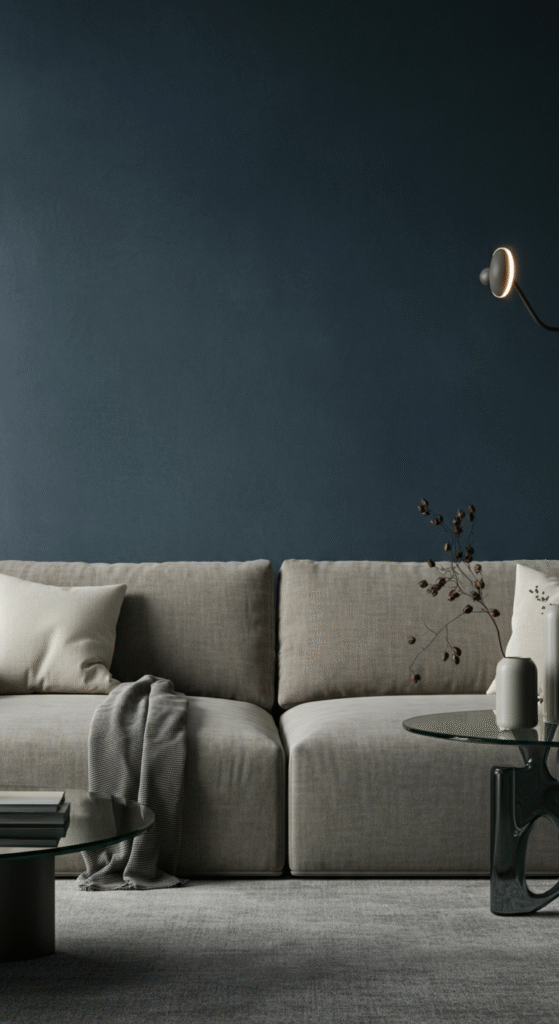
Slate blue brings a sense of depth to your minimalist living room while remaining subtle. It’s a sophisticated, muted blue that offers a more refined look than traditional blue shades. It’s perfect for adding a bit of cool tone to your living room without making the space feel cold.
12. Warm Sand: A Natural, Earthy Look
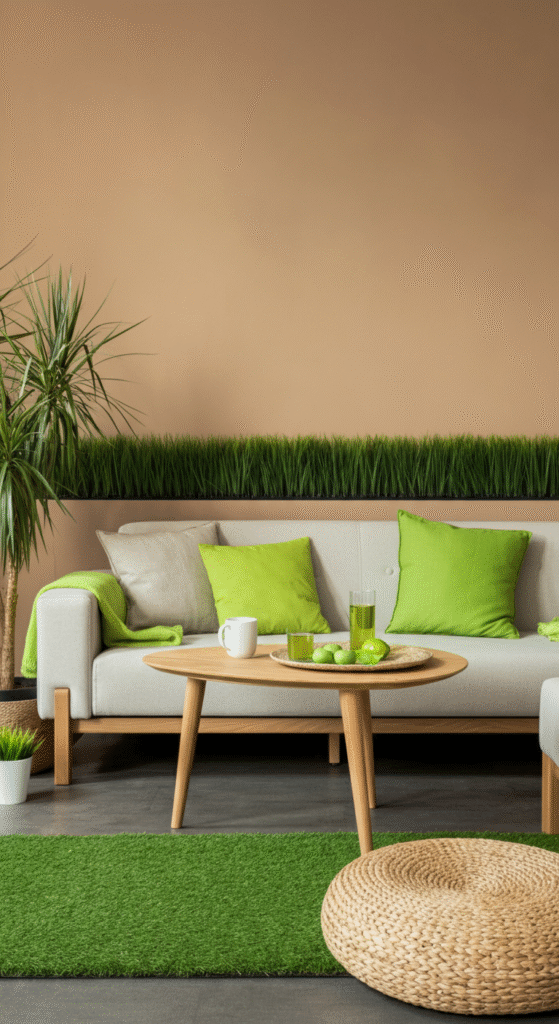
For a slightly deeper tone than beige, warm sand brings the perfect amount of earthiness to your living room. This color is timeless and grounding, adding a natural element to your minimalist decor. It’s also versatile enough to pair with various textures, from stone to fabric.
Interesting Fact: Warm sand tones can evoke a sense of tranquility, making them ideal for creating a peaceful and restorative living space.
13. Soft Lavender: A Gentle, Refreshing Hue
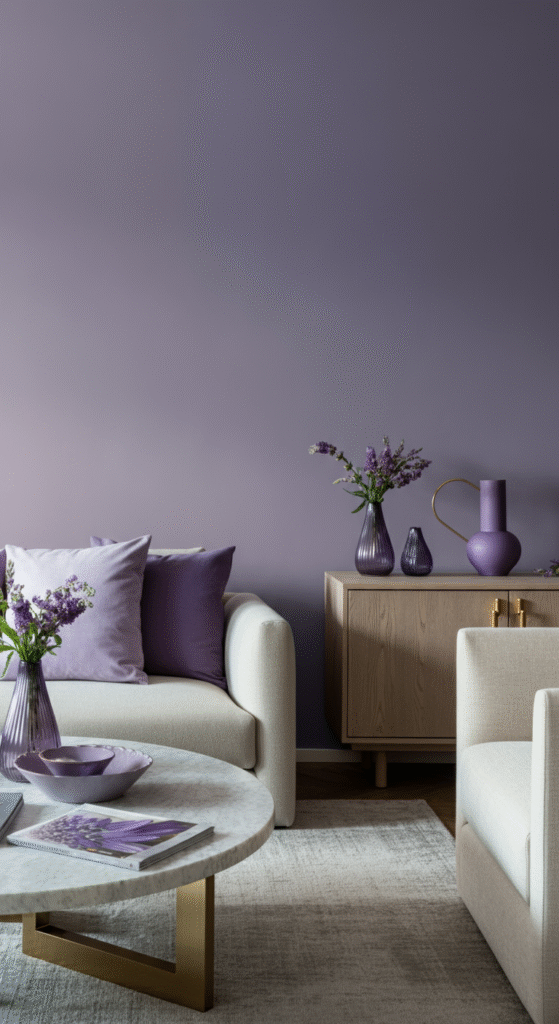
Lavender may not be the first color that comes to mind when thinking of minimalism, but this soft, muted purple is a great choice for a serene and refreshing space. Lavender works wonders when paired with soft whites and grays, creating a harmonious, calming living room environment.
14. Light Sage: Refreshing and Calming
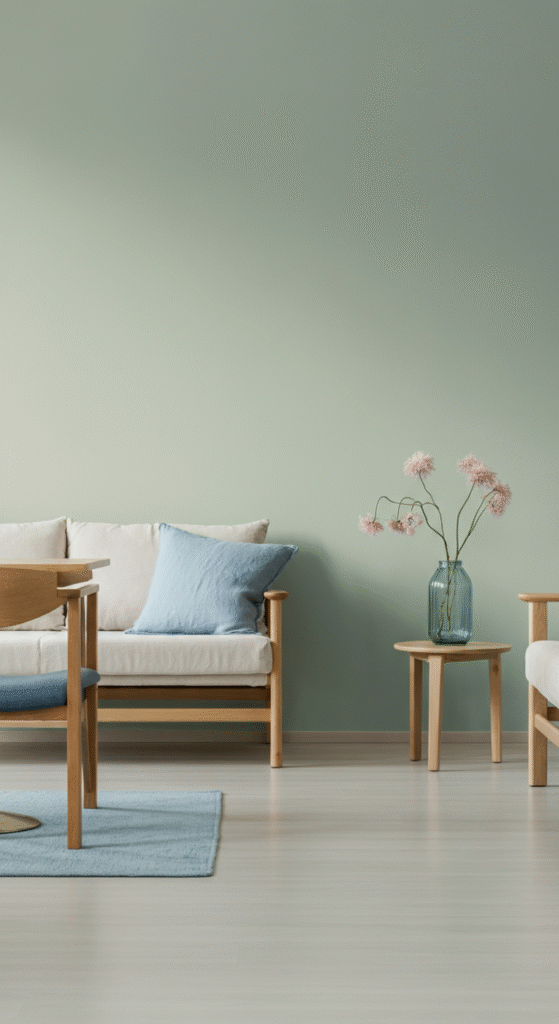
Sage is a soft green-gray that’s perfect for a minimalist living room. Its muted tone feels both refreshing and calming, creating a tranquil atmosphere that’s still vibrant. Light sage is ideal for pairing with natural wood tones, bringing in an earthy yet refined vibe.
15. Warm Mushroom: Soft and Subtle
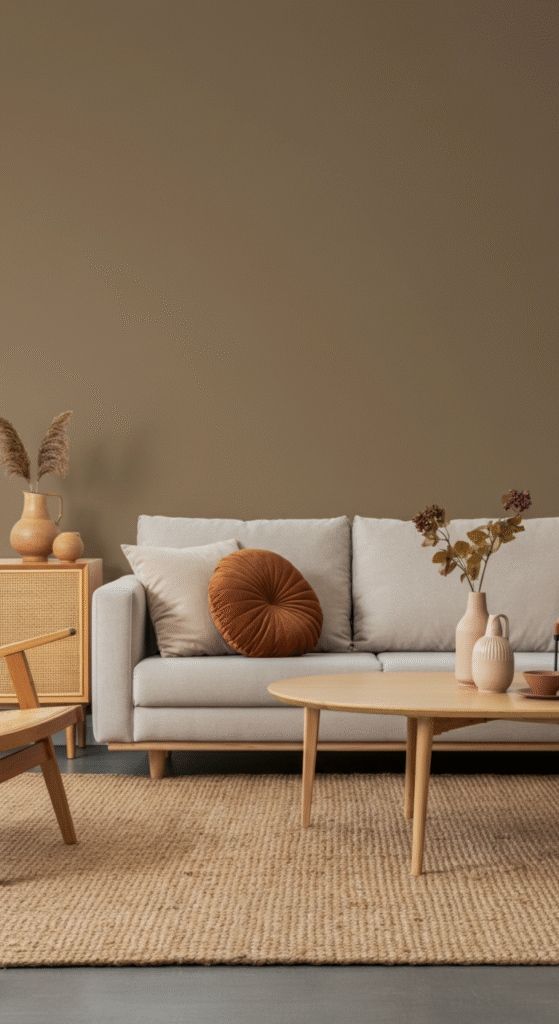
Mushroom is a lovely neutral shade that falls somewhere between taupe and gray. This understated color adds warmth to a room while keeping the minimalist aesthetic intact. It’s perfect for a minimalist living room that needs a hint of color but still maintains an elegant, subtle look.
Conclusion
Choosing the right paint color for a minimalist living room can completely transform the space, helping you create a chic, peaceful environment. From soft grays and whites to muted blues and earthy tones, the possibilities are endless.
Remember that minimalism isn’t about limiting your choices—it’s about finding a balance that brings harmony and tranquility to your space. Whether you opt for a soft, neutral tone or a gentle pop of color, the key is to keep things simple, elegant, and intentional.
The right color will not only enhance the aesthetic of your living room but also promote a sense of calm and relaxation, making it a space you’ll love to spend time in.
Frequently Asked Questions (FAQs)
What is the best color for a minimalist living room?
The best color for a minimalist living room depends on the atmosphere you want to create. Soft neutrals like gray, beige, and white are timeless and work well for a calm, serene vibe. If you prefer a bit of color, muted shades like dusty blue, sage, or lavender can add a touch of personality while maintaining a minimalist feel.
Can I use bold colors in a minimalist living room?
While minimalist design tends to favor neutral and muted tones, you can incorporate bold colors in small doses. Consider using an accent wall or adding bold-colored furniture or decor pieces. This allows you to add personality without overwhelming the space.
How do I make my living room feel bigger with paint colors?
Lighter shades like white, soft gray, or beige can help make a room feel more spacious by reflecting light. If you have a smaller living room, these colors will open up the space, making it feel airy and expansive.
What paint finishes are best for a minimalist living room?
For a minimalist look, matte or satin finishes work best. These finishes create a smooth, understated look without the sheen that can distract from the room’s clean aesthetic. Matte finishes are especially great for soft colors, while satin adds a subtle touch of elegance.
How can I add warmth to a minimalist living room without using too many colors?
To add warmth, consider using warm neutrals like taupe, ivory, or warm gray. You can also use natural textures like wood, stone, or linen in your furniture and accessories to introduce warmth without compromising the minimalist look.
